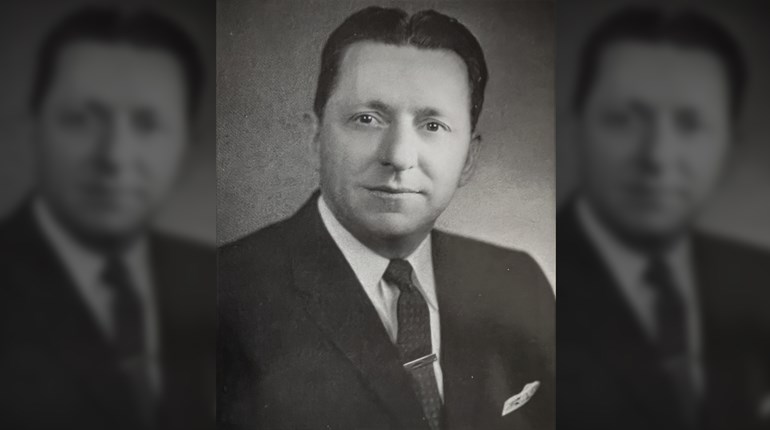
Upon entering the main door of the Great Lakes Shipwreck Museum at Whitefish Point in Michigan’s Upper Peninsula, located on the south shore of Lake Superior, the first artifact you encounter is a large, bronze ship’s bell weighing nearly 200 pounds. Exhibited in subdued lighting with soft mood music playing in the background, it is tangible evidence of the Great Lakes’ most memorable shipwreck—the loss of the ore freighter S. S. Edmund Fitzgerald on November 10, 1975.
Measuring 729 feet from stem to stern—more than the length of two football fields—the “Big Fitz,” as she was called, went down in a violent, hurricane-force storm just 17 miles northeast of the museum, taking her entire 29-man crew with her. Named for the President and Chairman of the Board of the Northwestern Mutual Insurance Company at the time, when the Fitzgerald was first launched on June 8, 1958, she was the largest ship on the Great Lakes and would remain so for the next 13 years.
If you’re not familiar with the Great Lakes, you might question how a ship so large could sink on a mere “lake,” no matter how rough the storm. The answer to that has to do with the massive size of the Five Sisters: Erie, Huron, Michigan, Ontario and Superior. They hold one-fifth of all the fresh surface water in the world and nine-tenths of the United States’ supply. These six quadrillion gallons of water, if spread over America’s lower 48 states, would flood all of the land 9½ feet deep!
The lakes are so large that the astronauts standing on the moon could see them. They are so well respected for their violence that they even appear for a page in Herman Melville’s 1851 epic whale tale, Moby Dick:
“…they are swept by Borean and dismasting blasts as direful as any that lash the salted wave; they know what shipwrecks are; for out of sight of land, however inland, they have drowned full many a midnight ship with all its shrieking crew.”
On November 9, 1975, at about 2:30 p.m., the Edmund Fitzgerald left Superior, Wisconsin, a harbor located on the west end of Lake Superior, fully loaded with more than 26,000 tons of taconite—processed iron-ore pellets. Soon joining her on the journey eastbound down the lake was the freighter Arthur M. Anderson. The two ships were in radio contact, with the Fitzgerald, the faster of the two, taking the lead by a distance of 10 to 15 miles.
Both ships’ captains (Ernest McSorley, Fitzgerald; Bernie Cooper, Anderson) knew it was the most dangerous time of year. During late fall, giant autumnal air masses from north and south collide over the Great Lakes, creating their own weather. Freshwater mariners even have a term for such violent storms—the Witch of November. But both seasoned captains had navigated in rough weather many times before, and were sure their ships could handle whatever the lake threw at them. Nevertheless, they also realized that a building storm was blowing in from the Great Plains, and they sensed it would be a big one.
At 7:00 p.m. gale warnings were issued by the National Weather Service, then upgraded to a storm warning at 10:00 the following morning. Throughout the day lake conditions continued to deteriorate, with wind gusts of 50 knots building waves 12 to 16 feet tall. By mid-afternoon the captain of the Anderson could no longer see the Fitzgerald due to snow squalls and spray off the immense waves—but he knew the ship was still there because he was tracking her on radar, 17 miles ahead.
At 5:20 p.m. on November 10, Captain Cooper reported steady winds of 58 knots with gusts to 70 knots, the waves now 18 to 25 feet. Then, about 6:55 p.m., he and the crew felt their ship shudder and saw a monstrous wave engulf their entire vessel from astern. The wave worked its way along the deck, crashing onto the back of the pilothouse, driving the bow of the Anderson down into the giant wave. Cooper later testified,
“Then the Anderson just raised up and shook herself off of all that water… just like a big dog. Another wave just like the first one or bigger hit us again. I watched those two waves head down the lake towards the Fitzgerald, and I think those were the two that sent her under.”
At 7:10 p.m. the Anderson radioed the Fitzgerald yet again asking, “How are you making out…?” The Fitzgerald replied, “We are holding our own.” Those were the last words anyone ever heard from the Edmund Fitzgerald.
After decades of investigation, no one yet knows definitively what sank the Edmund Fitzgerald. Speculation ranges from the two giant waves that may have capsized her, as suggested by Cooper; to the ship spanning two waves and breaking in half; to the Fitzgerald’s hull scraping a shallow reef. What is known for sure is that the “Big Fitz” now lies in 535 feet of water at the bottom of Lake Superior in two pieces, the stern upside-down and the bow right-side up.
In 1995, 20 years after the sinking, the ship’s bell was recovered from the cold depths of Lake Superior, replaced by a replica bell engraved with the names of the captain and crew to honor them and their final resting place. The original bell from the Edmund Fitzgerald is the one on display today at the Great Lakes Shipwreck Museum.
Less than a year after the disaster, Canadian singer-songwriter Gordon Lightfoot made it to the top of the pop music charts with his haunting ballad, “The Wreck of the Edmund Fitzgerald.” The lyrics of the song ask, “Does anyone know where the love of God goes when the waves turn the minutes to hours?”





































